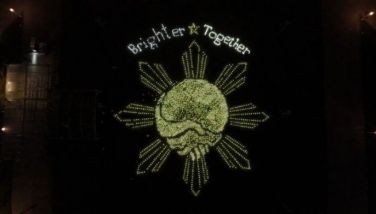The sad fate of the iconic Post Office building

Filipinos worldwide were dismayed to learn about the massive fire that gutted the Manila Central Post Office building, a 97-year-old structure considered to be an architectural treasure and declared as an “Important Cultural Property” by the National Museum of the Philippines in November 2018. It was similarly heartbreaking to watch videos of the burning building which took 80 firetrucks and 30 hours before the firemen declared a “fire out” – with damage initially estimated at P300 million.
News about the fire was carried in the United States by the New York Times, Bloomberg, the Los Angeles Times and other media because the building carries a significant place in the relationship and shared history of the United States and the Philippines.
Designed in the neoclassical style by Filipino architects Juan M. Arellano and Tomas Mapua (who were both sent to the United States as pensionados or scholars under the 1903 Pensionado Act of the Philippine Commission) and American architect Ralph Doane (who was appointed as consulting architect to the Philippine government in 1916), the Manila Central Post Office became a fierce combat zone during the Battle of Manila in 1945.
According to an account by the National Historical Commission of the Philippines, Japanese forces were using the “earthquake-proof and heavily reinforced concrete” building that was “practically impervious to direct artillery, tank, and tank destroyer fire” as a garrison – forcing American soldiers to “enter the building and engage the Japanese in room-to-room combat.”
The Japanese were initially able to repel the American forces because the rooms and corridors have been heavily barricaded with sandbags and barbed wire. But on Feb. 22, 1945 the Americans “managed to enter the building through a second story window and eliminated the Japanese who retreated to the Post Office’s large, dark basement,” the NHCP account went.
The war severely damaged the iconic building due to heavy bombardment, but it was restored a year later in 1946. In fact, a photo of the post office building is featured in the Harry S. Truman Library and Museum with an explanatory note that the photo is “part of a collected group of photos belonging to Francis P. Mathews as Secretary of the Navy and associated with the United States Philippine War Damage Commission.” The photo showed the damaged building prior to its reconstruction under the Philippine Rehabilitation Act of 1946.
There are growing calls for the restoration of the building from private groups as well as our legislators. Senate President Migz Zubiri and Senator Sonny Angara, who is chairman of the Senate Finance Committee, said they will be working with the Department of Budget and Management “towards finding funds to help restore the Post Office.”
Describing the building as a “cultural treasure that deserves national attention and support,” Tourism Secretary Christina Frasco has vowed to help in its rehabilitation, noting that an attached agency, the Tourism Infrastructure and Enterprise Zone Authority, “has long lent assistance in terms of rehabilitation of heritage structures.”
There are a number of NGOs in the US that are prepared to help in the restoration efforts, with recommendations that while the neoclassical style is retained to preserve the historic legacy of the building, perhaps the government can turn it into a more multifunctional structure rather than limiting it into a mail sorting and distribution center, especially since technology has changed the way documents and parcels are delivered.
What happened to the Post Office building is definitely a wakeup call on how we need to conduct regular monitoring and inspection of these old buildings to make sure that the wirings are updated and kept in good condition. According to reports and interviews with officials of the Bureau of Fire Protection, the building had no fire alarm system and did not have water sprinklers – ironic considering that it contained mail and parcel that could turn a small fire into a conflagration.
There is also a strong indication that an aggravating factor may have been climate change, contributing to the rising heat in Metro Manila that has become an “urban heat island” – a phenomenon wherein materials like asphalt and concrete absorb and trap more solar energy, thereby increasing the risk and intensity of fires according to experts.
I received hundreds of emails from loyal readers expressing their sadness at the destruction of the Post Office building, sharing the memories it played in their lives. One recalled the excitement he felt when he received a package and a letter from his girlfriend – now his wife of 50 years.
It would certainly be a good idea to modernize these old buildings in a way that would not compromise their original architectural designs, but would enable them to withstand threats such as fires, earthquakes and natural disasters that are now increasing in intensity due to climate change.
We have precisely been doing that here in Washington, DC with the recent renovation of the Ambassador’s Residence, which was in disarray and neglected for so many years. We also finished the previously uncompleted renovation of the Old Chancery Building. We made sure both were declared as national historical landmarks to ensure that some “wise guy” will not have ideas of selling them like what happened in 1986 when the GSIS/PAL Union Square building in San Francisco was sold for a song. Today, that property would be worth hundreds of millions of dollars.
Government buildings belong to the people. They should be properly maintained and duly respected as such. We should preserve these structures that are priceless; often, they are reminders of our history as a nation and as a people.
* * *
Email: babeseyeview@gmail.com
- Latest
- Trending
























